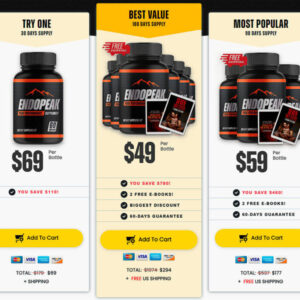Barrier Packaging: Safeguarding the Potency of Probiotic Formulas for Pets
$79.00
Discover the latest barrier packaging solution designed specifically for pet probiotic formulas, ensuring maximum stability and shelf life while maintaining product integrity.
Description
Barrier Packaging for Pet Probiotic Formulas: A Comprehensive Review
Introduction
Probiotics, live microorganisms that provide health benefits to the host when ingested in adequate amounts, have gained significant popularity in recent years due to their potential to improve the health and well-being of both humans and animals. Pet probiotics are specifically designed to support the digestive and immune systems of companion animals, such as dogs and cats. As the demand for pet probiotics continues to grow, it is essential to ensure their stability and efficacy throughout their shelf life. Barrier packaging plays a crucial role in preserving the viability and functionality of pet probiotic formulas. This comprehensive review examines the advantages and considerations of various barrier packaging technologies for pet probiotics, exploring their impact on product quality and shelf life.
Barrier Packaging Technologies for Pet Probiotics
1. Oxygen Scavengers
Oxygen is a major factor that can compromise the stability of probiotics. Exposure to oxygen can lead to oxidative stress, causing damage to the cell membrane and DNA, ultimately reducing the probiotic count and viability. Oxygen scavengers are materials that remove oxygen from the packaging environment, creating an anaerobic atmosphere that protects probiotics from oxygen damage.
Commonly used oxygen scavengers for pet probiotics include:
- Iron-based scavengers: These scavengers react with oxygen to form iron oxide, effectively reducing the oxygen concentration within the package.
- Chemical scavengers: These scavengers release oxygen-consuming chemicals, such as ascorbic acid or sodium ascorbate, to deplete the oxygen present.
2. Moisture Barriers
Moisture is another critical factor that can affect probiotic stability. Excessive moisture can promote microbial growth, leading to contamination and spoilage of the probiotic product. Moisture barriers are materials that prevent moisture from entering or exiting the packaging, maintaining an optimal moisture level for probiotic survival.
Typical moisture barriers for pet probiotics include:
- Aluminum foil: Aluminum foil acts as an effective barrier against moisture, light, and oxygen transmission.
- Metallized films: These films are made of plastic coated with a thin layer of metal, providing excellent moisture and oxygen barrier properties.
- Desiccants: Desiccants are substances that absorb moisture from the packaging environment, maintaining a low humidity level.
3. Light Barriers
Light exposure can have detrimental effects on probiotics. Certain wavelengths of light, particularly ultraviolet (UV) radiation, can induce DNA damage and reduce the viability of probiotic cells. Light barriers are materials that block or reflect light, protecting probiotics from light-induced damage.
Common light barriers used for pet probiotics include:
- Opaque materials: Opaque materials, such as black or brown plastics, prevent light penetration and provide excellent protection against light exposure.
- UV-coated films: These films are coated with a UV-blocking agent that absorbs or reflects UV radiation, shielding probiotics from light damage.
Advantages of Barrier Packaging for Pet Probiotics
- Preservation of probiotic viability: Barrier packaging protects probiotics from environmental factors that can reduce their viability, such as oxygen, moisture, and light.
- Extended shelf life: Barrier packaging helps extend the shelf life of pet probiotics by maintaining optimal storage conditions that prevent spoilage and degradation.
- Enhanced product stability: Barrier packaging reduces the risk of product degradation and ensures consistent quality throughout the shelf life of the product.
- Protection against contamination: Barrier packaging prevents the ingress of contaminants, such as microorganisms or foreign particles, ensuring the safety and quality of the probiotic formula.
- Improved consumer confidence: Barrier packaging provides visible evidence of product protection, contributing to consumer trust and satisfaction.
Considerations for Choosing Barrier Packaging for Pet Probiotics
- Material compatibility: The packaging material should be compatible with the probiotic formula and not leach any harmful substances into the product.
- Oxygen transmission rate (OTR): The OTR of the packaging should be sufficiently low to maintain an anaerobic environment and prevent oxygen exposure.
- Moisture vapor transmission rate (MVTR): The MVTR of the packaging should be low enough to prevent moisture ingress or egress and maintain an optimal moisture level.
- Light transmission: The packaging should provide adequate protection against light exposure, especially UV radiation, to preserve probiotic viability.
- Cost-effectiveness: The cost of the packaging material and packaging process should be balanced with the extended shelf life and enhanced product quality benefits.
Conclusion
Barrier packaging plays a critical role in ensuring the preservation and efficacy of pet probiotic formulas. By protecting probiotics from environmental threats, barrier packaging helps maintain their viability, prolongs their shelf life, enhances their stability, and ensures their safety and quality. Careful consideration of material properties, oxygen transmission rates, moisture vapor transmission rates, light transmission, and cost-effectiveness is essential in selecting the appropriate barrier packaging solution for pet probiotic products. Effective barrier packaging contributes to consumer satisfaction by delivering a high-quality, stable, and viable probiotic formula throughout its intended shelf life.





